Checking and removing
1. We prepare the car for repair work (see points 1 and 2 "Preparing the car for maintenance and repair").
2. Remove the engine trim (see "Decorative overlay of the engine - removal and installation").
3. Press the lock of the wiring harness connector.
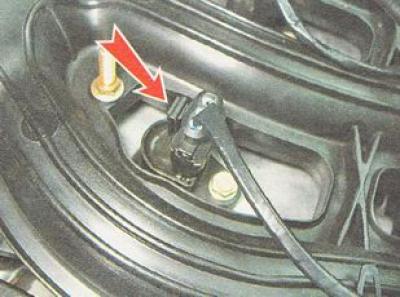
Holding the latch in this position, disconnect the wire connector from the ignition coil of the first cylinder.
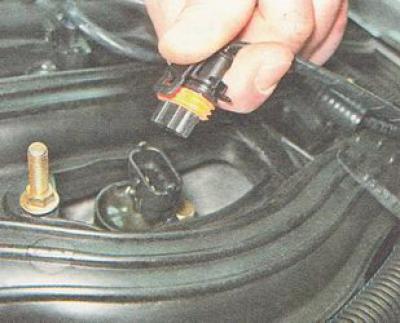
4. Turning on the ignition, we measure the voltage at pin 3 of the wiring harness connectors with a voltmeter (pin numbering is on the ignition coil).
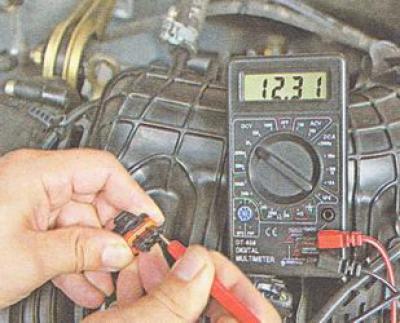
5. Similarly, we check the supply voltage of the second, third and fourth cylinders.
Note. The voltage at the output must be at least 12 V. If the voltage is not supplied to the connector or it is less than 12 V, then the battery is discharged, there is a malfunction in the power circuit, or the computer is faulty.
Warning. At the end of the voltage measurement, turn off the ignition on the car.
6. With an ohmmeter we measure the resistance between the terminals.
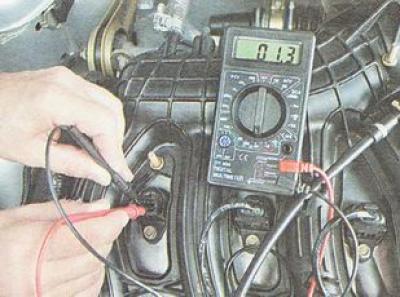
Note. The electrical resistance between terminals 1-3 of the ignition coil should be close to zero (about 1 ohm). The resistance between terminals 1-2 and 2-3 of the ignition coil must be large (strive for infinity). A defective ignition coil must be replaced.
7. Using a 10 mm socket wrench, unscrew the bolt securing the coil to the cylinder head.
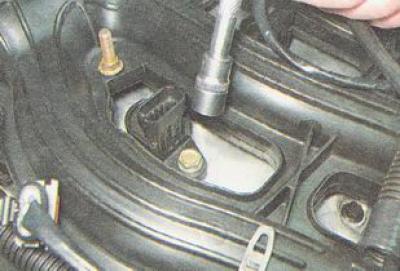
8. We take out the coil from the cylinder head.
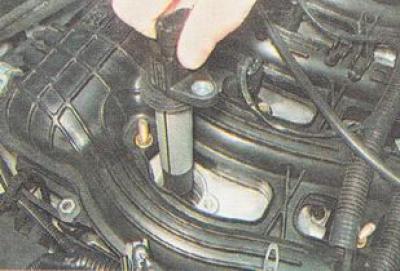
Installation
We install on the car all the removed parts in the reverse order of removal.
